This post may contain affiliate links.
The Outdoor Retailer show wrapped up last week. The OR show happens every 6 months and we never miss it. It’s always in the same place, in a huge convention center downtown Salt Lake City. We use it as an opportunity to scout out cool products for RVers, and each show we tend to find at least one new thing that excites us.
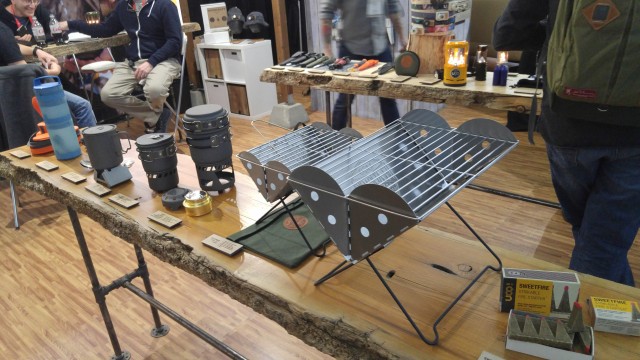
If you’ve followed us for a while you’re familiar with this trade show, since we talk about it a lot. But now here’s something I haven’t told you: I spend the entire 3 days at the show completely lost.
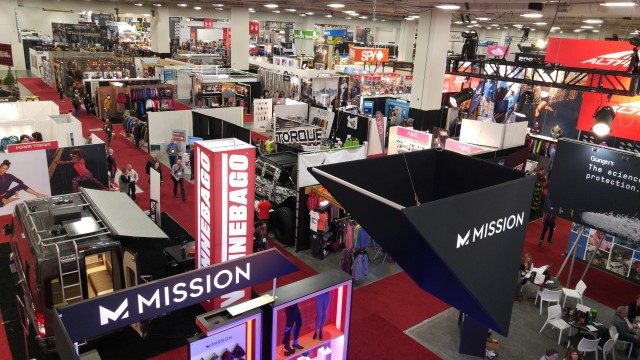
It’s so true. I am utterly, hopelessly lost for 6 days of my life each year. The convention center isn’t set up in a recognizable shape, you know…like a rectangle. It’s more set up like a confusing “L”, but with flourishes and bends; narrowed parts here and there that give you the illusion you may have turned into the top leg of the “L” when really, you’re still in the bottom with (what feels like) no way out. It doesn’t help that the show exhibits are all over the place in random patterns and sizes giving no assistance or directional clues to help a sister out.

I should probably fess up. This problem isn’t just isolated to the Outdoor Retailer show. I am admittedly a directionally-challenged person. I especially notice it when we’re on the road in the RV, in unfamiliar settings. It isn’t totally my fault though. I blame Albuquerque.
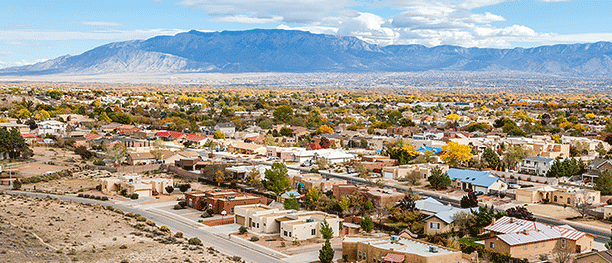
After college, I went to a teacher job fair in Iowa assuming I’d find a teaching position close to home. Long story short, I ended up signing a contract on the spot to come teach in Albuquerque, New Mexico. I drove home from that fair giggly and wild, saying to my friend who went with me, “OMG! I just signed a freaking contract to go teach in Albuquerque!!! WHERE IS ALBUQUERQUE ANYWAY?!? Do I need a passport?!” It was the craziest thing this small-town Midwestern girl had ever done to date. A few months later, I moved to the “big city”. I spent almost two decades teaching and living there.
Albuquerque is the easiest city ever to navigate. You’ve got the mountains on your east side, and can pretty much see the whole city wherever you are. Living there, you really don’t need to turn on your sense of direction. Feeling lost? No worries! Just look up! “Ah ha! There are those eastern mountains; I know right where I am…let’s go!” It didn’t help that I left Albuquerque for Salt Lake City. Same scenario. Streets in a grid, mountains in the east, brain switched to Off.
So here’s my theory. Living in geographically-anchored-grid-based-mountain-cities caused me to stop exercising the part of my hippocampus responsible for developing spatial memory. It’s the whole use-it-or-lose-it thing. I wasn’t using it, so therefore I wasn’t building any new grid cells or place cells, which are special neurons necessary for having a highly-honed directional sense. Anyways, that’s my story and I’m sticking to it. Scientists everywhere are probably rolling their eyes.
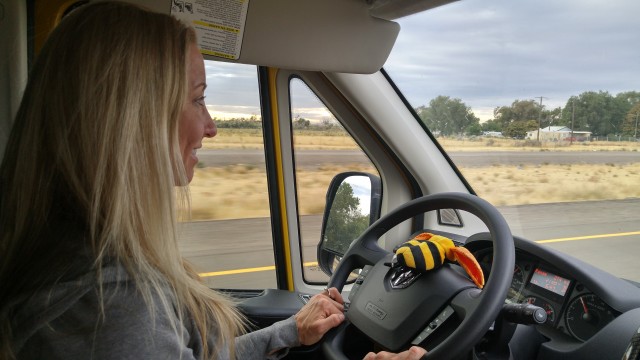
Why is it that some people seem to know instinctively where to go and others (like me) are prone to getting lost? James is annoyingly great with directions. Well I should retract the “annoying” since I pretty much depend on it being my own directional mechanism sucks. I’m just jealous, because I know he doesn’t work at it at all. Research shows there’s a genetic component to our directional capabilities, and this is clearly the case with James. Yet, here’s the good news; much of it is actually learned. The brain can be trained to improve our way-finding abilities specifically by practicing the skill of finding our way, and experts offer up a few exercises we can do to make this happen. So take heart fellow directionally-challenged souls, there’s hope for us yet!
EXERCISE #1: Create a Mental Map & Quit Depending So Heavily on Technology:
Experts say devices like our GPS systems in the RV can become crutches. But come on, do we really need “experts” to tell us that? Of course they are! They inhibit our ability to develop a better sense of direction since we don’t have to do the pesky task of thinking ourselves. Since we can easily “check out” once the address is plugged in, we aren’t staying connected to where we are on Earth.
Next time you’re headed somewhere new in the RV try this. Before going, study your route and even trace it with your finger to get the lay of the land. Committing your route to memory and taking note of landmarks along the way (lakes, mountains, etc) will give you context for where you’re going to be. The brain needs exercise, too. If we depend less on technology and more on our own cognitive skills, we give our brains the exercise they need to develop an improved sense of direction.
EXERCISE #2: Be Mindful of Your Environment:
If we can stay mindful of our surroundings, it’s easier to strengthen connections in our brains to where we are and have been. I see this as an important one when out hiking or biking…or any situation where our cell phones might fail. Some suggestions to be Mindful of Your Environment are to:
1) make stops to soak in the scenery,
2) take notes and make comments out loud about what you see,
3) identify landmarks along the way,
4) physically point in the correct direction both to your destination and back to your starting point.
So basically you’re working to stay present and aware, while filtering out visual, tactile, and auditory “noise” that distracts us from our directional awareness. Meditation is a great way to improve mind wandering and “noise” distractions, so if you’re serious about improving your sense of direction and learning to be more present, practicing meditation may help.
EXERCISE #3: Test Your Internal Compass & Figure Out Where North is:
Keeping the cardinal directions in mind at all times is important if you want to maintain awareness of where you are…and is a HUGE area of weakness for me (grrr Albuquerque). Let’s do a test right now. As quick as you can, figure out which direction you’re facing. Did you instantly know? Did you have to think about it a few seconds? Or were you like me and had to stand up, look around, find the sun, look around some more, think really hard, and then go ask your spouse? If so, then you probably could benefit from this exercise, too.
Your phone most likely has a compass feature, or you could easily download one. Once you do, get in the habit of checking in with it throughout the day. Test yourself first by figuring out North, and then use the compass to see if you’re correct.
So there you have it, 3 exercises to improve one’s sense of direction. I’ve decided I’m going to practice them diligently over the next 6 months. It’ll be a good challenge for me, and I like having challenges. My big test for improvement will be the summer Outdoor Retailer show, and whether I’ll be wandering directionlessly or purposefully. Fingers crossed there’s hope for me yet!




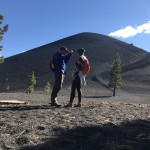
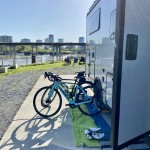





You are very right, I used to use my Tomes guide and memorized every road trip I took,
now each time I travel even to same location I must GPS it because I never look at my surroundings, it’s sad.
We love your outdoor adventure life!
It’s our dream.
Thank you
It’s crazy how quickly technology has changed the way we think, isn’t it??? Not that I don’t love my GPS! But the good old days of using our brains, while less convenient, were probably better for us!
Stef, I was waiting for you to give navigation directions credit from the “bee?” on your steering wheel. So disappointed. And, sad to say, yes, I’m directionally challenged too!
LOL, Sue! That bee is a mascot for a group of Winnebago campervan owners called the Winnie Bs. I’ve been charged to drive around the country until I find another van owner who will take care of “Honey”. So far, no takers. Honey’s flying to Tampa with me tomorrow though, and I’m determined to pass her off!
Forget it Stefany – – you never had the ‘directional gene’. We have no clue why, but God didn’t give women an internal compass. Stick with what you’re good at: left and right
If you want a real challenge, set the GPS on another language in another country. In Italy, heading towards a roundabout to “VIA PAPA GIOVANNI XXIII” I swear the GPS was having an asthma attack and stuttering at the same time with the roman numerals while trying to tell us where to go. The other guys in the car were laughing their …. off while I was just trying to figure out where to turn….in Italian traffic.
LOL!!! This reminds me of when James downloaded the Dave Zabriski voice (and commentary) on our GPS…it was pretty hilarious, for about 30 minutes. I had to listen to that for months before we got around to changing it.
At least you can acknowledge your lack of direction. My DW has been known to argue with the GPS….. even when driving somewhere she’s never been before. I’ve received her co-pilot navigation instructions including clear concise directions like:
“Ok…. at the next intersection… you can go LEFT or RIGHT… NO NO! I meant your OTHER RIGHT! Why aren’t you listening to me?”
Perhaps it is SHE who has the excellent sense of direction? I mean come on, if she knows the GPS is wrong, which we all know it commonly is, she could be directionally-gifted!!!